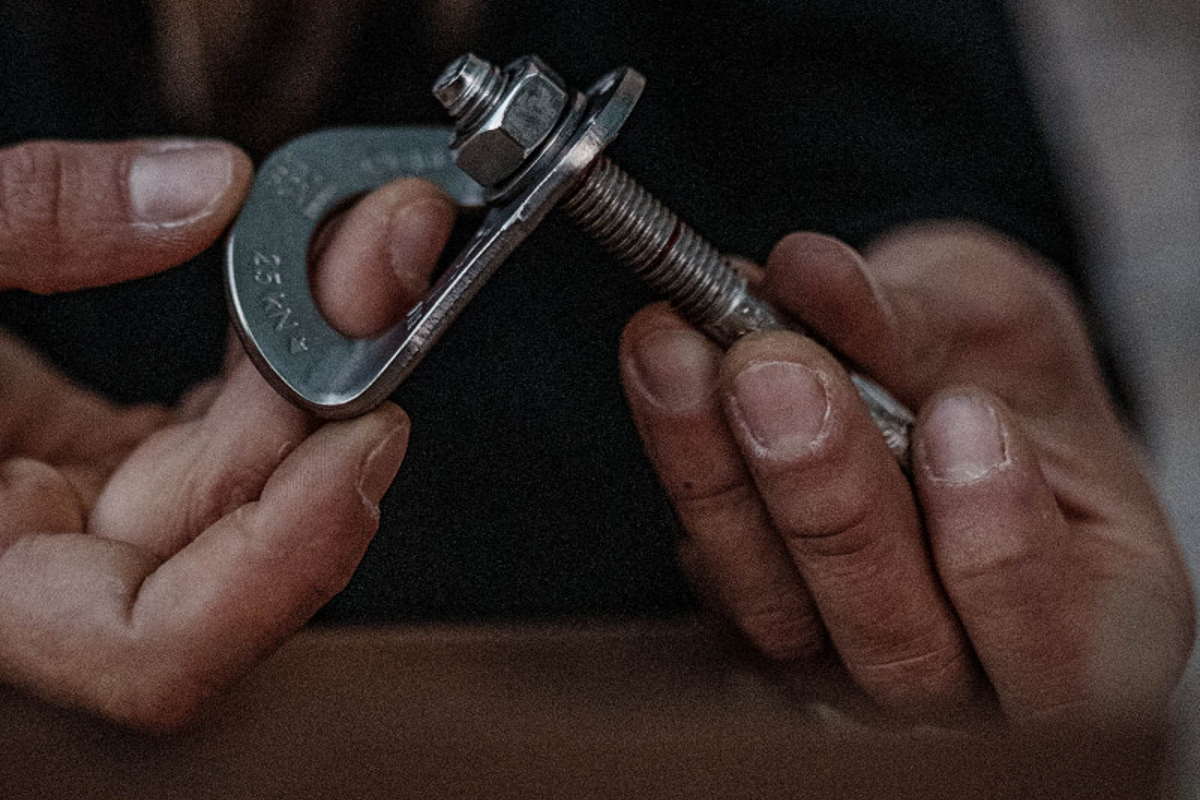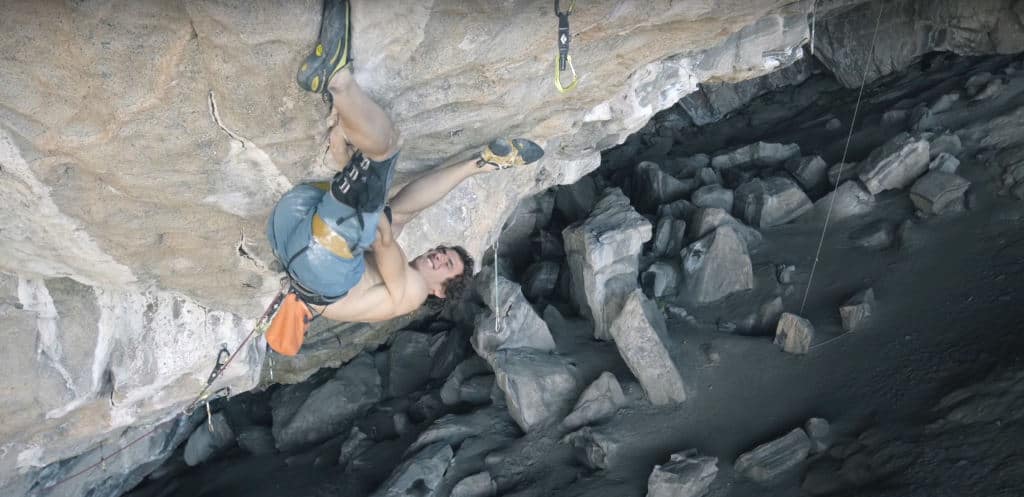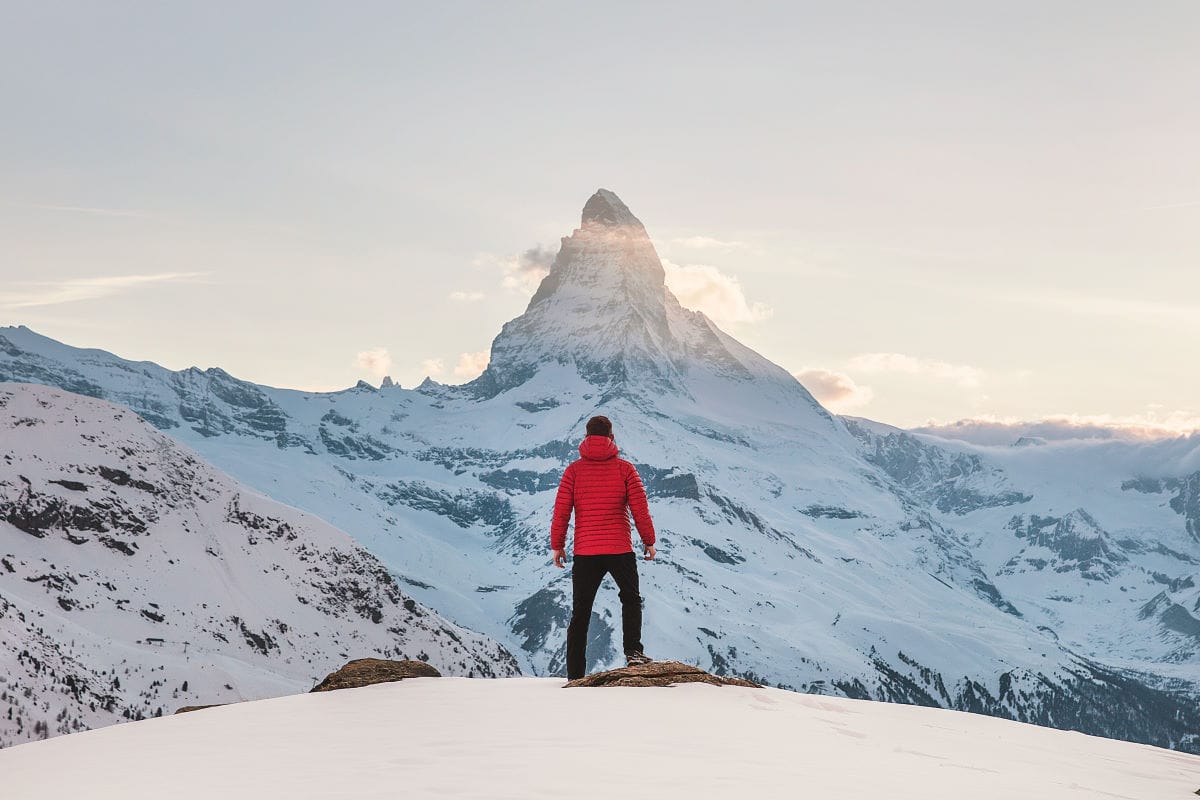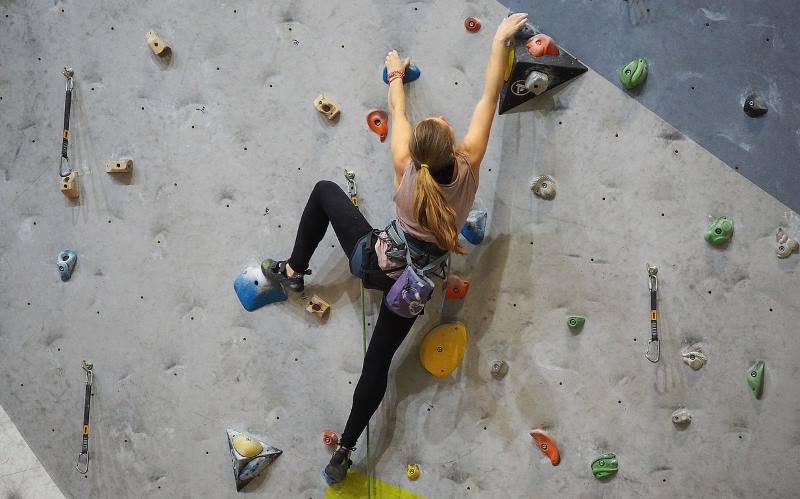Sport Climbing hit the headlines after it featured at the Olympics for the very first time – though it was controversial to most climbers. Find out why its inclusion caused rifts in the community, and read what Speed Climbing is all about.
- What Is Speed Climbing?
- What Are Autobelays?
- Speed Climbing At The Olympics
- What Are The Speed Climbing Rules?
- Where Can I Try Speed Climbing?
- What Is The Tomoa Skip? Skipping Holds In Speed Climbing
- What Is The Speed Climbing World Record?
- Men’s Speed Climbing Record Table
- Women’s Speed Climbing Record Table
- What Is The Olympic Speed Climbing Record?
- Who Won Speed Climbing At The Olympics?
- What Climbing Shoes + Harness Do Speed Climbers Use?
- How Hard Is The Speed Climbing Route?
- How Tall Is The Speed Climbing Wall?
- Why Is Speed Climbing In The Olympics?
- Why Is Speed Climbing Controversial?
- When Did Speed Climbing Start?
- Is Speed Climbing Always The Same Route?
- Who Set The Speed Climbing Route?
- How To Train For Speed Climbing?
What Is Speed Climbing?
Speed Climbing is a race between two climbers to see who gets to the top first. The routes are identical, and the same set of holds and layout has been used for 15 years! Competitors start at the bottom on the third beep and must hit a buzzer at the top of the wall to stop the timer.
In early qualification rounds, climbers aren’t competing against each other but just trying to get the fastest times in two heats. The top sixteen climbers then go on to the 1/8 finals and compete head to head in pairs. The winner goes on to the 1/4 finals, then the semi-final (1/2), and lastly the finals between just two climbers.
The winner in the finals takes Gold and the loser Silver. The losers of the semi-final compete to determine third and fourth place which is important for the Bronze medal. The most important thing is not to fall or false start as this automatically loses the round.
This format is used in IFSC World Cup, World Championships, as well as the Olympics.
Other Types Of Speed Climbing
Climbing outside on big routes for the fastest time is definitely a thing but pretty unrelated to speed climbing as a sport. This is like a sprint on a track whereas outdoors is like a trail run. You can watch Alex Honnold and Tommy Caldwell trying for a speed record on the Nose in Yosemite in Reel Rock 14.
What Are Autobelays?
The autobelay is the system the climbers use to get up and come down from the wall safely. A drum at the top contains a roll of strong fabric tape and a carabiner (metal clip) at the bottom. The climbers clip themselves into the carabiner which automatically locks to the tie-in point of their harness.
The autobelay acts like a seat belt as the tape is always being pulled up into the machine. This isn’t enough to pull the climber off of the floor, but just enough to pull the tape in so there isn’t slack in the system as they go up. Slack in a fall would mean a big jolt to the climber.
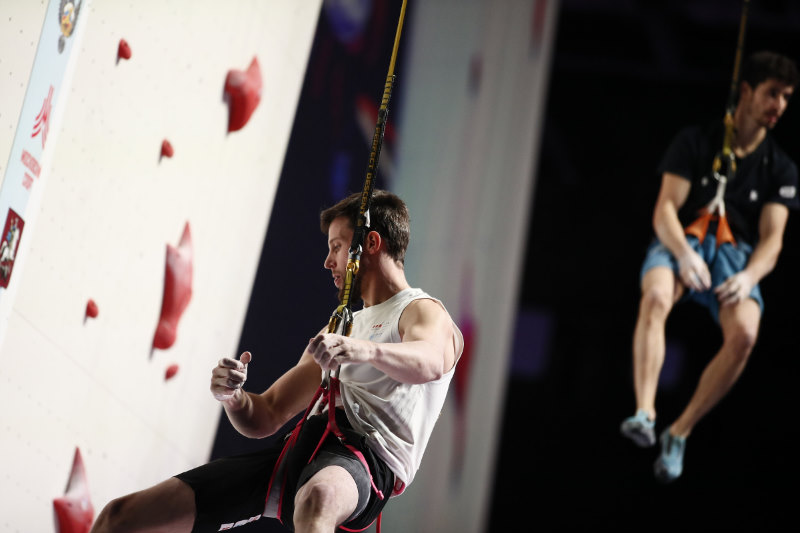
When the climber falls or jumps there is a braking system that uses a high-strength metal coil or a set of powerful magnets to arrest the fall and then slowly lower the climber. It’s rated for heavy people and big jumps so competitors don’t have to worry about huge leaps.
Are Autobelays Safe? Have They Ever Failed?
They’re very safe. Most climbing gyms have a few for normal sport climbing routes so climbers can go alone without a belayer. There have been cases of failures but they are generally in much older models or recently to do with maintenance issues.
Most accidents on autobelays are from climbers not actually clipping themselves into the carabiner. This happens mainly to more experienced climbers who have spent years with a partner and normally tie themselves in. Watch a video about what happened on an autobelay fall.
What Autobelay Is Used In The Olympics?
The official machine is the Perfect Descent Speed Drive. It takes in slack tape at 15ft or 4.6m per second, so plenty enough so the tape is always taut. You can buy other brands and models that do the same thing.
Speed Climbing At The Olympics
Speed Climbing was featured at the Olympics for the first time in 2021. It came as part of the new Sport Climbing event which combined three types of climbing. Speed Climbing, Lead Climbing, and Bouldering are the three events.
Competitors must place well in all three categories for a medal chance. The rank per event was multiplied together and the lowest overall score wins. For example, Climber A with 1st in Lead, 2nd in Speed, and 4th in Bouldering would get 8 points (1 x 2 x 4 = 8). Climber B with 3rd in Lead, 1st in Speed, and 7th in Bouldering would get 21 points (3 x 1 x 7 = 21). Climber B would win in this example as they had the lowest score.
Find Out More
– What Is Bouldering?
– What Is Lead Climbing?
– What Is Sport Climbing?
– Complete Guide To Olympic Climbing
What Are The Speed Climbing Rules?
Speed climbers start with one foot on a pressure plate, the other on the wall, and two hands on the starting holds. There is an automatic timing system that starts on the third beep of the machine and finishes when the button at the top is pressed. There used to be a person with a stopwatch or timer as well but it’s now done by computer only.
The judge starts the timer by announcing “ready” and pushing the button on the timing system attached to both sides of the wall. A second later the first beep starts, followed by another two a second apart. On the third beep climbers can go.
The display shows times down to 1/100th of a second but times are recorded down to 1/1000th of a second aka to four decimal places – 0.001. If there is a tie then both climbers’ second-best time in that competition decides the winner. This hasn’t happened in any IFSC competitions yet and is fairly unlikely.
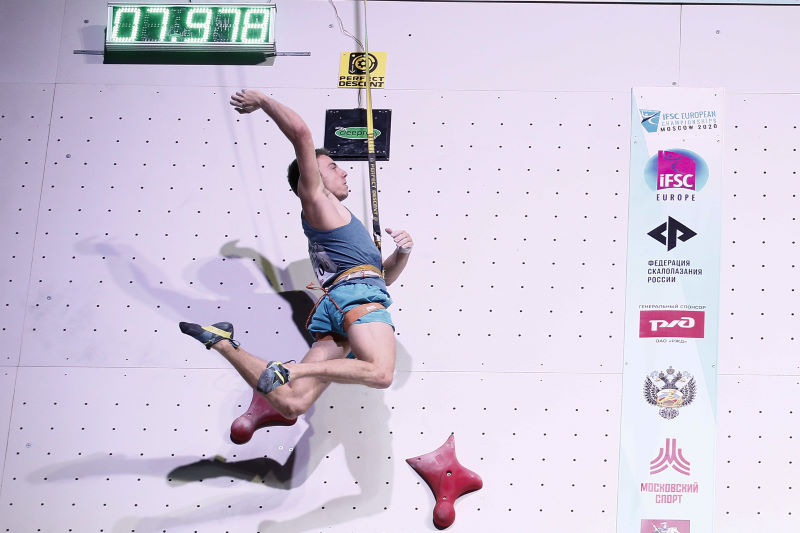
What Counts As A Fall In Speed Climbing?
If a climber falls, they lose the round outright. The climber can catch themselves and carry on as long as they use the last hold they just touched. Any lower than that and it’s a fall. Touching the side or top of the wall, or touching the ground again after starting both count as a “fall”.
Speed Climbing False Start Explained
A false start is recorded if the climber’s foot comes off of the pressure pad before the third beep. False starts count as a loss and result in “no valid time”, without a second attempt. In qualifications, the climber will be placed last. In later rounds, they lose that race and go to the lower bracket to try again for a lower placing.
There is actually a tenth of a second (0.1 seconds) after the third beep which also counts as a false start. This is a little controversial but is meant to be about realistic human reaction times. Some climbers however have been disqualified from a false start where their foot left the pressure plate after 3 seconds but before 3.1 seconds.
Where Can I Try Speed Climbing?
Check your local climbing gym’s website or social media to see if they have an autobelay set up for speed climbing. Normally you can do a bouldering or climbing intro course and they’ll show you how to use the autobelays as they’re pretty simple. You’ll probably find these other types of climbing you get introduced to way more fun and engaging.
What Is The Tomoa Skip? Skipping Holds In Speed Climbing
The fastest way to get from A to B is always in a straight line – unless there are obstacles. The speed climbing route has holds that zig and zag across the wall. Climbers don’t have to touch all of the holds on the way up so plot out routes that work the best for them.
As a result, many of the holds further out to the side get skipped completely and climbers aim to go in as straight a line as possible. Previous record holder Reza Alipour started the trend called the “Reza” where he skipped the third hold entirely. Watch it here. Most also skip the third to last hold.
The next step up (…literally) came when Tomoa Narasaki started skipping the third foothold on the left and bringing his foot up to his hands on the third handhold. This allows him to push directly up from there as is called the “Tomoa skip”. Watch below.
Now basically everyone does it. In general the lower on the wall the faster you are going so it’s easier to skip lower holds. However, it looks like the Indonesian team have started skipping another hold further up the wall, leading to…
What Is The Speed Climbing World Record?
The current Men’s Speed Climbing World Record is 5.009 seconds. It was set by Kiromal Katibin of Indonesia at the Chamonix event of the Speed Climbing World Cup on July 8th, 2022.
The current Women’s Speed Climbing World Record is 6.53 seconds. It was set by Aleksandra Miroslaw at the Salt Lake City Speed Climbing World Cup on May 27th, 2022.
Men’s Speed Climbing Record Table
| Time | Climber | Date | Where | Competition |
|---|---|---|---|---|
| 5.009 | Kiromal Katibin | July 8th, 2022 | Chamonix, France | IFSC World Cup |
| 5.04 | Kiromal Katibin | June 30th, 2022 | Villars, Switzerland | IFSC World Cup |
| 5.097 | Kiromal Katibin | June 30th, 2022 | Villars, Switzerland | IFSC World Cup |
| 5.105 | Kiromal Katibin | May 27th, 2022 | Salt Lake City, USA | IFSC World Cup |
| 5.178 | Kiromal Katibin | May 6th, 2022 | Seoul, South Korea | IFSC World Cup |
| 5.208 | Veddriq Leonardo | May 28th, 2021 | Salt Lake City, USA | IFSC World Cup |
| 5.25 | Kiromal Katibin | May 28th, 2021 | Salt Lake City, USA | IFSC World Cup |
| 5.48 | Reza Alipour Shenazandifard | April 30th, 2017 | Nanjing, China | IFSC World Cup |
| 5.60 | Danyil Boldyrev | September 12th, 2014 | Gijon, Spain | IFSC World Championships |
| 5.73 | Libor Hroza | August 31st, 2014 | Arco, Italy | IFSC World Cup |
| 5.76 | Libor Hroza | August 30th, 2014 | Arco, Italy | IFSC World Cup |
| 5.884 | Evgenii Vaitcekhovskii | October 13th, 2012 | Xining, China | IFSC World Cup |
| 6.26 | Qixin Zhong | August 27th, 2011 | Arco, Italy | IFSC World Championships |
Women’s Speed Climbing Record Table
| Time | Climber | Date | Where | Competition |
|---|---|---|---|---|
| 6.53 – Current | Aleksandra Miroslaw | May 27th 2022 | Salt Lake City, USA | IFSC World Cup |
| 6.648 | Aleksandra Miroslaw | May 6th 2022 | Seoul, South Korea | IFSC World Cup |
| 6.84 | Aleksandra Miroslaw | August 6th 2021 | Tokyo, Japan | 2021 Olympic Games |
| 6.964 | Iuliia Kaplina | November 21st 2020 | Moscow, Russia | IFSC European Continental Championships |
| 6.995 | Aries Susanti Rahayu | October 19th 2019 | Xiamen, China | IFSC World Cup |
| 7.101 | YiLing Song | April 26th 2019 | Chongqing, China | IFSC World Cup |
| 7.32 (tie) | Anouck Jaubert | April 22nd 2018 | Moscow, Russia | IFSC World Cup |
| 7.32 | Iuliia Kaplina | July 22nd 2017 | Wroclaw, Poland | World Games |
| 7.38 | Iuliia Kaplina | April 30th 2017 | Nanjing, China | IFSC World Cup |
| 7.46 | Iuliia Kaplina | April 23rd 2017 | Chongqing, China | IFSC World Cup |
| 7.53 | Iuliia Kaplina | July 11th 2015 | Chamonix, France | IFSC World Cup |
| 7.56 | Iuliia Kaplina | June 21st 2015 | Chongqing, China | IFSC World Cup |
| 7.74 | Iuliia Kaplina | May 17th 2015 | Central Saanich, Canada | IFSC World Cup |
| 7.85 | Iuliia Kaplina | October 19th 2013 | Wujian, China | IFSC World Cup |
What Is The Olympic Speed Climbing Record?
The current Women’s Speed Climbing Olympic Record is 6.84 seconds. It was set by Aleksandra Miroslaw in 2021 at the Tokyo Olympic Games and also broke the World Record at the same time.
The current Men’s Speed Climbing Olympic Record is 5.45 seconds. It was set by Bassa Mawem in 2021 at the Tokyo Olympic Games.
Who Won Speed Climbing At The Olympics?
Though there isn’t a separate medal for Speed Climbing, there is still something to be said about being the fastest climber at the Olympics.
On the Men’s side Alberto Ginés López won the Speed finals, which helped him massively in getting the Gold medal overall. The fastest time overall in the Men’s side was Bassa Mawem with 5.45 seconds set in the qualification round, which is the current Olympic record. Unfortunately, he suffered a complete bicep rupture injury which took him out of the finals.
On the Women’s it was Aleksandra Miroslaw who won the Speed finals in amazing form, also setting the World Record and new Olympic Record at the same time with 6.84 seconds.
What Climbing Shoes + Harness Do Speed Climbers Use?
Climbing shoes are very different from normal shoes. They fit tightly to the foot for good control with the toes curled at the front so pressure can be put onto tiny holds. The rubber used is very soft and sticks to the holds and even to the surface of the flat wall itself. The rubber comes over the front of the foot and the heel for more surface area.
Most climbers use a soft, supple shoe that slips on easily and weighs as little as possible. A popular speed climbing shoe is the La Sportiva Cobra 4.99. It’s a trimmed-down version of the Cobra and the 4.99 is named for breaking the five-second barrier.
For harnesses really the lightest is the best. The Petzl Sitta is one of the lightest climbing harnesses on the market. You’ll see the distinctive orange and white on many competing at the Olympics. Some competitors even cut off unnecessary parts like the gear loops – though we don’t recommend you go anywhere near a harness with scissors.
If you’re looking to get into climbing or have recently started we actually don’t recommend either the Cobra or Sitta as they’re very specialized. Instead, take a look at our picks for gear that have better value and work more for all-around climbing.
Our Favorite Climbing Gear Hand-Picked For Beginners
– Best Beginner Climbing Shoes
– Best Beginner Climbing Harness
– Best Beginner Climbing Rope
How Hard Is The Speed Climbing Route?
The official speed climbing route is around a 5.10c/d or 6a+ grade. It’s not very hard as the holds are generally pretty good. The difficulty is more in the reaches but if you’re going at speed that’s not a problem. In fact, most climbers aim to skip as many holds as possible on the route to save time.
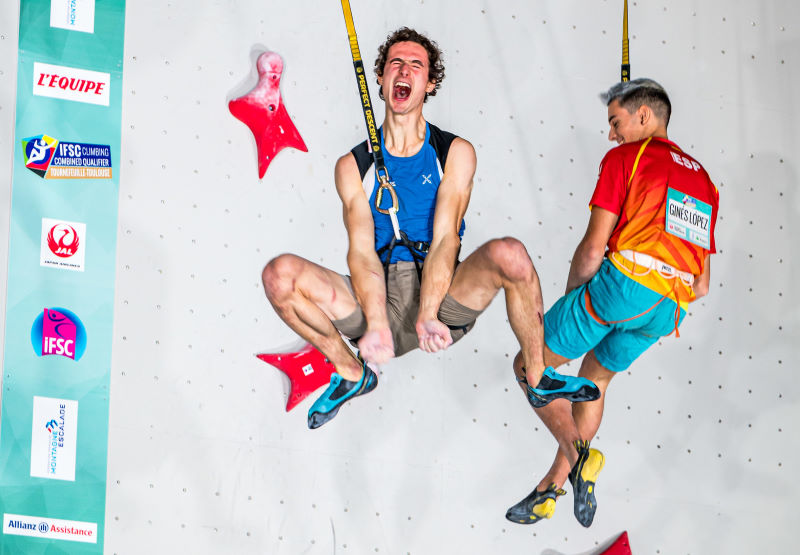
The walls are slightly textured too so climbers can push their feet against it. This is really common on indoor climbing walls as it is more like the porous textured rock you’ll find outside.
Speed Climbing Holds
The holds are just one hand hold and one foot hold repeated at different angles. Some parts of the x-shaped hand holds are better than others so climbers will memorize when they can take big jumps to almost guaranteed holds.
You can buy official Speed Climbing route holds manufactured by Volx though there are copies that use the official dimensions published by the IFSC
How Tall Is The Speed Climbing Wall?
The speed climbing wall is 15 meters or 49 feet high. That’s around the height that most indoor climbing walls have – plus or minus a few meters. The wall has two lanes that are both three meters wide. Outdoors routes can be way taller.
It has an overhang (leans back) of 5 degrees which makes it a little harder than a completely upright route. This is only a mild overhang and is helpful for stopping climbers from hitting holds on the way up or down. The routes you’ll see in the lead climbing part of the competition will feature even more steeply overhanging sections.
Speed climbing wall height might differ indoors for training. National speed climbing training centers usually have two or three smaller walls set with top or middle sections only. That allows climbers to practice those sequences separately.
Why Is Speed Climbing In The Olympics?
In the western climbing world, Bouldering and Lead climbing are the biggest sports by far. Speed climbing really isn’t very well known – to the point where many famous comp climbers had never tried it before the Olympic announcement. However, it’s massive in Russia and many other countries like Indonesia.
When Sport Climbing was proposed to the International Olympic Committee, they told the IFSC there were only limited medals available. The choice was essentially all three categories or just one. As a result, the IFSC decided to go with a combined format where competitors had to climb in all three categories to compete for an Olympic medal.
Why Is Speed Climbing Controversial?
Speed Climbing being in the Olympics is controversial because of the combined format. Climbers used to be divided roughly into strict Speed Climbing specialists, and climbers who did Lead and Bouldering but might be better in just one of the two.
The skill difference is massive. In Lead and Bouldering, there is a lot of route reading, planning to deal with new problems, delicate balance, as well as finger strength and core conditioning needed. Essentially the main difference between those two is just stamina and endurance.
With Speed Climbing it’s all about explosive power and practicing dedicated sections over and over. People who generally climb outdoors but might train at climbing gyms tend to not see the appeal of Speed but can respect it.
The big problem is that the best climbers in the world are now being forced to practice something they’ve never really done before and might not enjoy at all. It means the best “climber” might lose, and also that Speed specialists might completely dominate others but not get a medal.
It’s not a great situation for either group and some are pretty grumbly about it. Thankfully there will be two sets of medals for Paris 2024. Boulder and Lead will be combined, with Speed separate. You’ll probably see a lot of climbers only competing in the things they’re good at.
When Did Speed Climbing Start?
Speed climbing has been around in different forms for many years but more as friendly competition. In Russia, it was fairly popular outdoors as a spectator sport. They used gloves and helmets and included rappelling down in the competition.
Modern climbing competitions started in the 80s but were generally fairly slow and static, with competitors taking turns on one route to see how far up they could get, with timings being for tie-breakers. To climbers this is interesting, to most casual viewers it can be less so.
Modern speed climbing really started with the X Games in the 90s. They intended to show off the dynamic and powerful moves of climbing and started pitching climbers up the same route head to head. It didn’t really take off but many pros found it a great way of making money on the side to fuel their outdoors adventurers.
Russian and ex-soviet state climbers in particular found they could train for the competitions fairly cheaply and win comparatively large sums when taken home. It’s very popular in Indonesia and Russia though less so in the west.
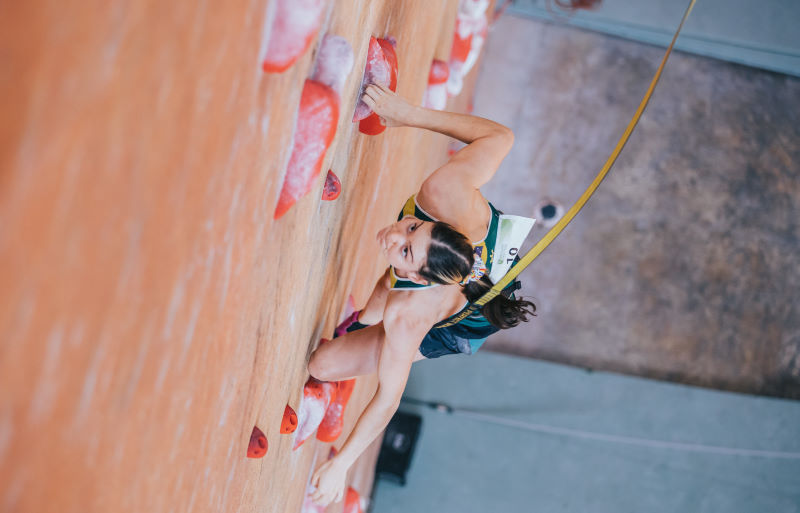
Is Speed Climbing Always The Same Route?
Yes, the route used in Speed Climbing is always the same. Everyone can practice on the same holds in the exact same positions, knowing they’ll be competing on the same route. It’s been that way since the speed climbing route was originally set back in
There used to be different routes but they got standardized only because there hasn’t been much of an official organization for speed climbing. There are calls to change the route every few years. Now with the Olympics, it would make sense to change it every four years straight after the games finish.
Who Set The Speed Climbing Route?
Jacky Godoffe set the standardized route back in 2007 in Arco. He was being asked by competition organizers to set a more dynamic route. He threw it together in one afternoon using holds he found and it worked. The next competition used the same route and then everyone just followed suit.
How To Train For Speed Climbing?
Explosive movement and power beat standard climbing techniques by miles. Heavy squats and weighted pull-ups done fast are the keys. On the wall, you’ll find that practicing dynos (dynamic moves) will help with your balance and proprioception.
